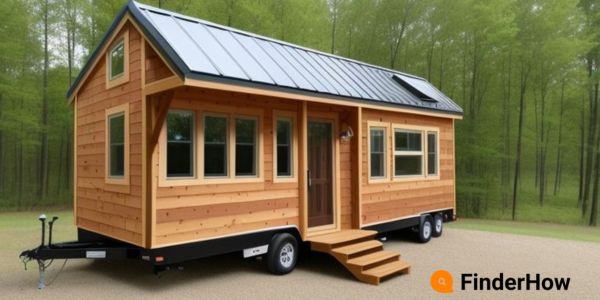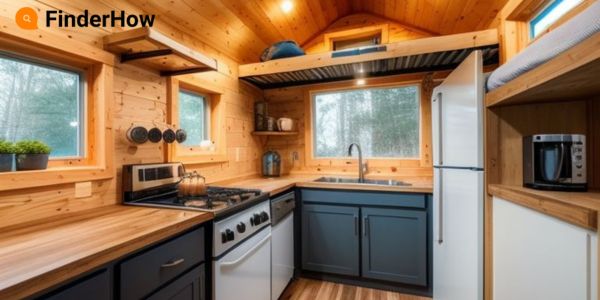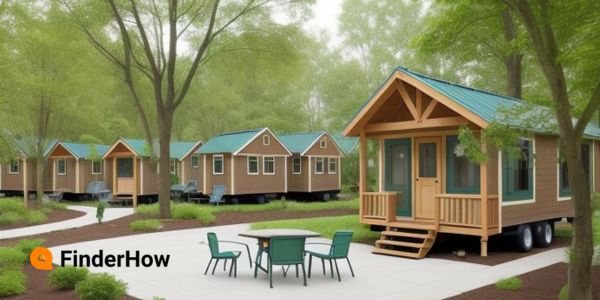Tiny Home Living: The Big Impact of Small Living Mania
In a world obsessed with bigger houses, sprawling properties, and the accumulation of ‘stuff’, a countercultural movement has been steadily gaining momentum – the tiny home living movement. Tiny homes, typically defined as dwellings under 400 square feet, are captivating hearts and minds with their promise of simpler living, financial freedom, and a smaller environmental footprint. It’s a revolution in how we think about housing, and it raises questions: What exactly drives the tiny home mania? What are the undeniable benefits, and are there any downsides? Let’s dive in and explore the big impact of this small-scale living trend.
Why Tiny Homes living? The Drivers Behind the Movement
- Financial Freedom: Building and maintaining a tiny home is significantly cheaper than a traditional house. With a lower price tag, no (or tiny) mortgages, and reduced utility costs, tiny home dwellers find themselves with extra cash to pursue passions, pay down debt, or simply enjoy a less stressful financial existence.
- Environmental Responsibility: Tiny homes consume far fewer resources to build and operate. Their small footprint requires less land, and they naturally promote a more energy-efficient lifestyle as there is less space to heat, cool, and power.
- Tiny Home on Wheels:

- Minimalism and Intentional Living: Tiny homes force you to pare down your possessions, embracing the philosophy that less stuff equals more freedom. This focus on the essential fosters greater intentionality in what we own and how we live.
- Flexibility and Mobility: Many tiny homes are built on trailers, offering a degree of mobility that standard houses lack. This opens up opportunities to explore new locations, chase seasonal work, or adjust your living situation with greater ease.

The Upsides of Tiny Home Living
- A Simpler Life: The smaller space demands a focus on what truly matters. Living in a tiny home often leads to increased time outdoors, fostering a stronger connection to nature, more meaningful interactions with loved ones, and less time spent on household chores.
- Personal Growth: Downsizing and adapting to the unique challenges of tiny living can foster remarkable personal growth. It encourages resourcefulness, problem-solving skills, and a greater appreciation for experiences over material possessions.
- Community Connection: Many tiny home dwellers join tight-knit communities, finding a sense of belonging among like-minded individuals who share the values of simple, sustainable living
Challenges and Considerations
- Space Constraints: It’s no surprise that life in a tiny home demands creative storage solutions and an acceptance of living in close proximity with others (if sharing the space). Getting comfortable with “cozy” is crucial.
- Zoning and Regulations: Finding legal places to park or build your tiny home can be a challenge. Zoning laws often haven’t caught up to this trend, leading to frustration and limitations in some areas.
- Lifestyle Adjustment: Embracing tiny home living is a massive lifestyle shift, particularly for those who enjoy hosting large gatherings or have vast collections of belongings.
Is a Tiny Home living Right for You?
The appeal of tiny home living doesn’t mean it’s the perfect solution for everyone. Here are some questions to help you decide if it could be your path:
- Can I truly embrace a pared-back material lifestyle?
- Am I comfortable with the limited privacy and space that comes with tiny home living?
- Do I have the practical skills (or willingness to learn) required for the sometimes-unique maintenance and repair needs of a tiny house?
- Am I prepared to navigate the potential zoning and legal challenges in my desired location?

Tiny By the Numbers: Statistics That Reveal the Trend
The tiny home movement isn’t just anecdotal; there’s data to back up its growth:
- Market Growth: The tiny home market has an estimated compound annual growth rate of 4.88% between 2022 and 2027. (Source: RubyHome)
- Demographics: Surprisingly, 55% of tiny house owners are women, and around 40% of owners are over the age of 50 – this demonstrates the movement’s appeal across ages and genders. ([Source: Today’s Homeowner])
- Financial Impact: 68% of tiny homeowners have no mortgage, a stark contrast to the 29.3% of mortgage-free homeowners in the general US population. (Source: The Tiny Life)

Beyond the Personal: Tiny Home living and Social Impact
The tiny home living revolution isn’t just about individual aspirations. It has implications for broader social issues:
- Affordable Housing Crisis: Tiny homes offer a potential (though not complete) solution to the growing affordable housing crisis. Their lower cost opens the door to homeownership for more people.
- Homelessness: Some communities are exploring the use of tiny home villages to provide dignified housing options for the homeless.
- Disaster Relief: The mobility of tiny homes makes them potentially valuable as quick-to-deploy temporary shelters in the aftermath of natural disasters.
Exploring Tiny Home living Options
If you’re intrigued by the idea of tiny living, here are some ways to get started:
- Rent Before You Build: Try renting a tiny home through Airbnb or similar platforms to get a feel for the lifestyle before committing to building or buying.
- DIY vs. Professional Builds: Do you have the skills and time for a DIY build, or is hiring a professional builder the better option for you?
- Tiny Home Communities: Research tiny home communities in your area. These offer a ready-made support system and legal infrastructure.
The Future of Tiny Homes
Tiny homes aren’t just a passing fad. They represent a powerful and growing movement toward a more sustainable, financially accessible, and intentional way of living. As zoning regulations evolve, innovative designs emerge, and greater awareness spreads, we can expect the tiny home phenomenon to continue to gain popularity.
Whether you’re actively seeking to downsize or simply fascinated by the concept, the tiny home revolution is an inspiring example of how we can challenge societal norms and create meaningful lives in smaller footprints.



